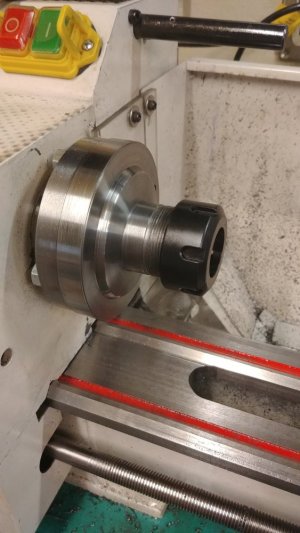trlvn
Ultra Member
Did you try to test if the piece is work-hardened? Or if it has previously been fully hardened? IE will a file cut or skate?I reground my HSS bit and tried in combination with the speed/feed rate on the calculator on LMS and sadly it still just brned the tip and didn't cut at all. ...
At this point, you don't have much to lose by trying to anneal it. Heat it to cherry red and let it cool slowly.
The other possibility is that the HSS is crap. Where did it come from? Even the cheap tool blanks from Busy Bee are pretty good.
Craig


